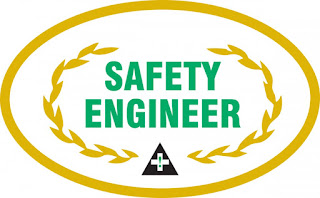FIRE AND FIRE TRIANGLE:
Definition of Fire:
The term fire may be defined as an oxidation process with evolution of heat and light. In other words, fire is a chemical reaction between a fuel and oxygen in the presence of heat. Therefore, it may be started that three things are essential for a fire to take place. Can be represented by the three arms of triangle viz., Heat, combustible substance or fuel and the supporter of combustion or oxygen. A fire cannot take place in the absence of any one of these three factor.
In extinguishing a fire, all that is done is to break any one of the arms of the fire triangle does the heat maybe remove and temperature broad below the ignition point or supply of oxygen to the fire maybe stop or by removing the fuel from the scene of Fire.
(A) Oxygen:
Oxygen is a diatomic gas, having an atomic number of 8 and atomic weight of 16. It is a good supporter of combustion, and can undergo chemical reaction with almost all kinds of fuel during combustion.
(B) Fuel:
Fuels differ greatly Indore physical and chemical properties wearing as they do from simple gases and gaseous mixture through solid fuels. On combustion of fuels may be considered undergoing thermal decomposition. This resulting product Mein either undergo for the decomposition or be burnt to the final product.
All fields may be regarded as mixture of four components, viz.,
- Carbon
- Gaseous
- Hydrogen
- Carbon monoxide
(C) Heat:
• increase in size
• increase in pressure
• change or physical state for example solid liquid and gas
• product of glow for luminosity aur colour
• generation of small electric current ( thermoelectric effect )
There are three distinct ways by which heat maybe transfer from one place to another.
- Conduction:
This is the process in which it is transmitted from hotter part of the body to the colder 1 hour from a hot body to another colder body in contact with it without any transference of material particles. In this process the molecules oxidations motions increases as the temperature rise and they share their energy with slow moving molecules and hence the transfer of heat take place.
(B) Connection:
In this process, the heated particles go up and more in the air for the liquid, in a cycle, call convection current carrying the heat with them from a hotter to colder place.
(C) Radiation:
Radiation is a transmission of heat in the from of electromagnetic waves it does not require a medium and the Waves travel at a very high speed. Radiated energy can undergoes the following effects:-
- can pass through certain materials without any loss of energy.
- can be observed by certain material and slowly raising the temperature of the absorbing media.
- can get reflected by the media.
Chain Reaction Theory:
A self substance chemical process which consists of a series of different reaction in which intermediate products are formed in one step destroy in a success reading step is known as chain reaction. The intermediate products form are known, as chain carrier. Since they help to carry the reactions of completion. Chain careers maybe free atom of diatomic gases. Free radical like OH, CH, O and H are form. Free radical is a group of atoms which carries 1 and fair elections. Another word free radical is a free valence bond. Do hydraulic free radical OH, for e.g., main unit with a free hydrogen atom to from a water molecule, H2O or it may enter into many other reaction. Hn career may exist only for a fraction of second. Millions of chain carrier sir form and instantly destroy during a course of a chain reaction.
All Chain Reaction consists of an initiation phase, a propagation phase and a termination phase. In the first phase, the chain careers are from which promote the propagation phase combustion may be terminated by a chain breaking reaction in which change careers are take out of play by another substance with react with chain carrier.
Some intermediate reactions occur in such manner that several change careers are form with each step. Such a reaction is known as chain breaking reaction.
Each of these new chain careers Mein then branch out and start a new series of reactions of its own. If two aur three chemical reactions are started each time one is completed, it is easy to visualise how the chain branching can spread upto explosive proportion. It is known that it is never actual solid or liquid metals which burn in a fire, but rather the gases arising out of the thermal decomposition of matter ( pyrolysis ) aur out of the distillation of liquid. Generally all fuels contain hydrogen, carbon, carbon monoxide and gaseous hydrocarbon.
Classifications of Fire:
Classes of fire - Material - ExampleA - Carboneous material - paper, glass, cloth, coal, trees, wood, furniture, etc.
B - Inflammable : petrol fuel oil, lubricating oil, paraffin oil, spirits Paints, chemical, etc.
C - Gaseous : acetylene, and coal gas, Mithane, chlorine gas, ammonia
D - Metallic : copper, zinc, aluminium, iron magnesium, etc.


Comments
Post a Comment